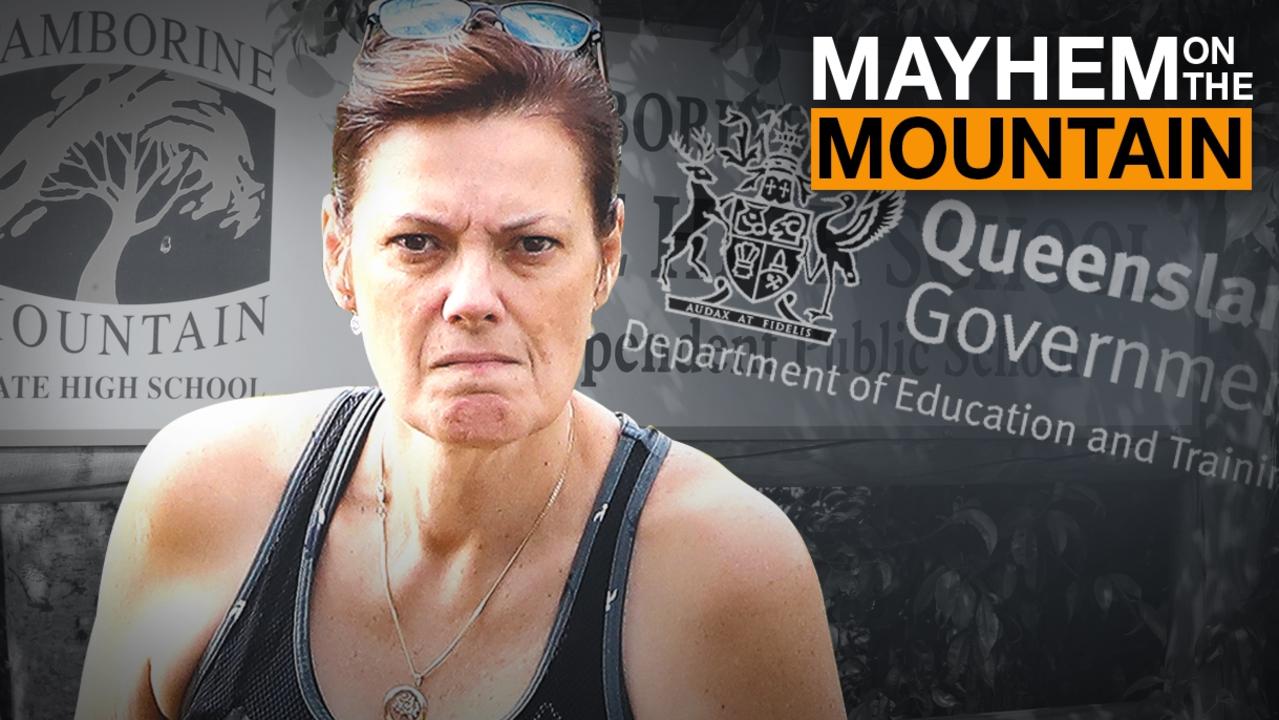Category 5 cyclones: What the wind, rain and noise is really like
As Queensland braces for more wet and wild summer conditions, these survivors detail exactly what it’s like inside a deadly cyclone. SPECIAL REPORT

QLD News
Don't miss out on the headlines from QLD News. Followed categories will be added to My News.
Deafening storms, terrifying winds and unrelenting rain.
Welcome to a Queensland cyclone, one of the most powerful weapons in Mother Nature’s arsenal.
Australia’s eastern coastline, in particular, has copped the brunt of the most dangerous tropical cyclones in recent memory – and more could be on the way.
Cyclone Yasi, a category 5 monster that flattened north Queensland in 2011, caused $800 million in property damage alone, while Cyclone Alfred in 2025 threatened southeast Queensland.
So what is a tropical cyclone?
They form over warm tropical waters, such as the Coral Sea, creating a low-pressure system.
These systems often generate off the Queensland and far north coast between November and April.
Severe cyclone winds in excess of 300km/h rotate around a central ‘eye’ and can extend hundreds of kilometres from the deceptively calm centre.
These are first-hand accounts from those who looked a category 5 cyclone in the eye.
‘A COUPLE OF JET ENGINES’
Peter Ross and his wife Debra rode out Cyclone Yasi in Tully in 2011.
“I’m glad we went to the evacuation centre – that was frightening enough,” he said.
“It’s a pretty solid building but you could feel it shaking and the wind was like a couple of jet engines, a couple of freight trains.
“The only blessing was our two-year-old son Robert slept through most of it.”

‘IT WAS TERRIBLE’
Ten years after Tropical Cyclone Yasi, Cardwell resident Anne Mealing opened up over her trauma.
The ferocity of the cyclonic winds drove rain horizontally, forcing water through window frames and under eaves, compounding damage.
“All the water and the rain that was coming in, there was no power for the freezers,” she said of the 2011 event.
“I mean, if you’ve got a generator you can keep your freezer going, your fridge going … those people that went south were not allowed back into town, the people that went north didn’t seem to have any trouble returning.
“It was just so wrong, it was terrible.”
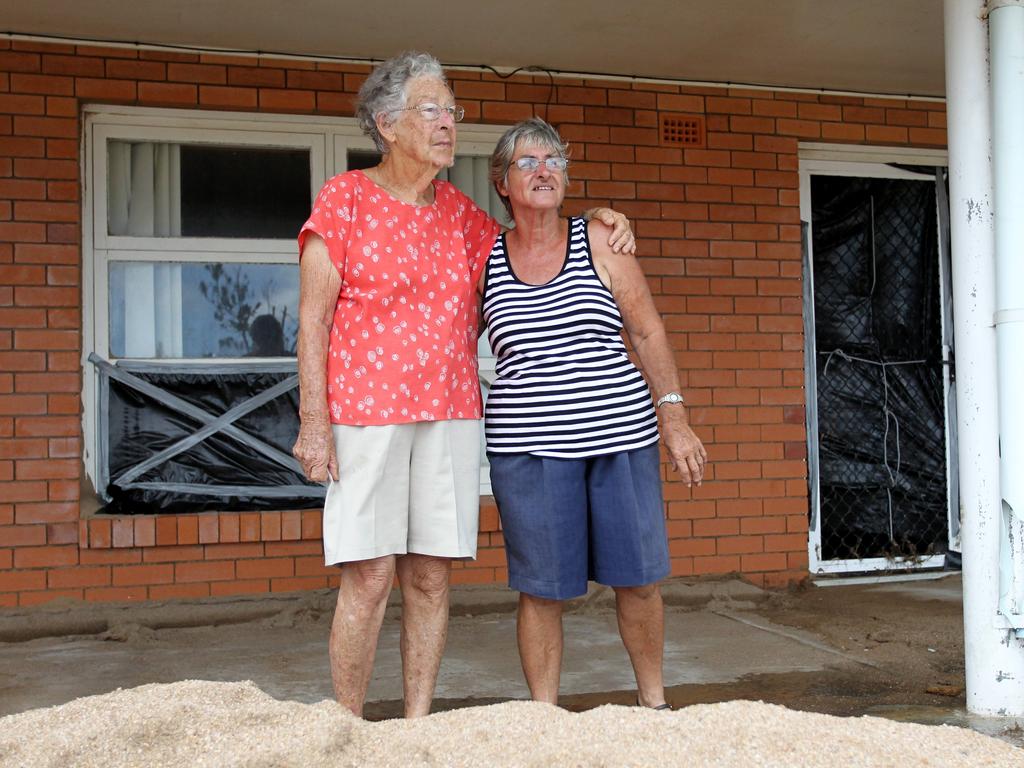
‘IT WAS SO PAINFUL’
Rain and wind, sure ... but don’t forget about another key danger in a category 5 cyclone.
A woman – who wished to remain anonymous – was caught in the eye of Cyclone Tracy in Darwin in 1974, and in 2011 opened up about her haunting memories.
She said her most terrifying experience was feeling, and nearly dying from, the enormous pressure.
“It’s called explosive deepening – it’s when the eye of the cyclone shrinks rapidly and that increases the pressure exponentially,” she explained.
“We were told to open all the windows on the side away from the storm, to prevent dangerous pressure from building up inside. As soon as the eye started shrinking, all of the windows and door to the room I was in slammed shut.
“Because the pressure was so intense, and was different inside the house to what it was outside, I couldn’t breathe or move – I was just paralysed. I felt like my lungs were being crushed and in my ears it felt like someone had a drill there. It was so painful.”
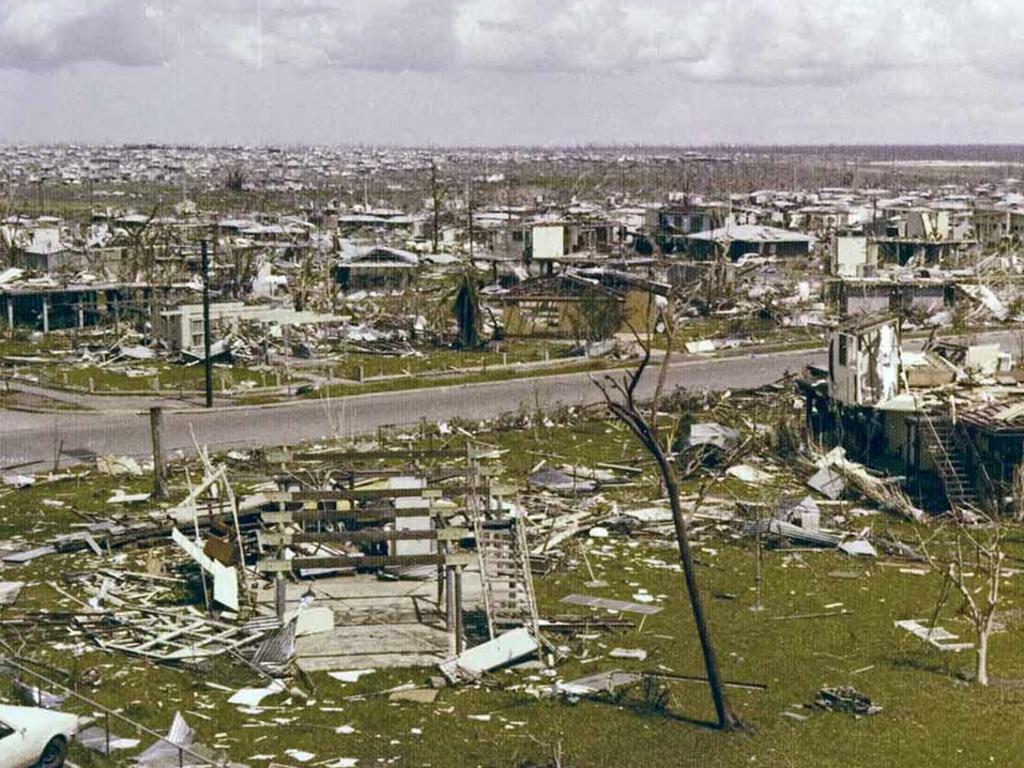
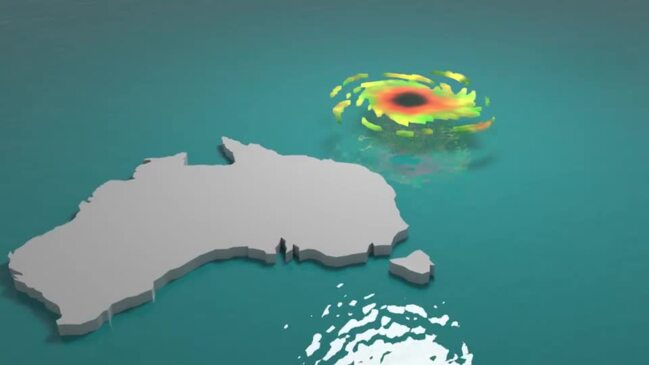
‘IT WASN’T A PRETTY SIGHT’
David Hutchen will never forget his front-row seat to destruction as the outer eye of Cyclone Yasi thundered through Port Hinchinbrook in 2011.
Leaving for higher ground before the Category 5 storm ripped the Cardwell marina to shreds, nothing could prepare the waterfront homeowner for the scene of annihilation that played out on his front deck.
In the early hours of February 3 a 5.3m storm surge combined with heavy wind lifted nearly every boat in the marina beyond the reach of pylons that anchored floating pontoon walkways in place.
Dozens of boats became sandwiched together in a twisted mess.
“It was pretty monumental, (the) deck was covered in boats. There was a yacht in the garden and a 60ft (18m) fishing boat on the outer wall, a 36ft (11m) game boat (on the deck) and all the furniture was wrecked, it wasn’t a pretty sight,” Mr Hutchen said.
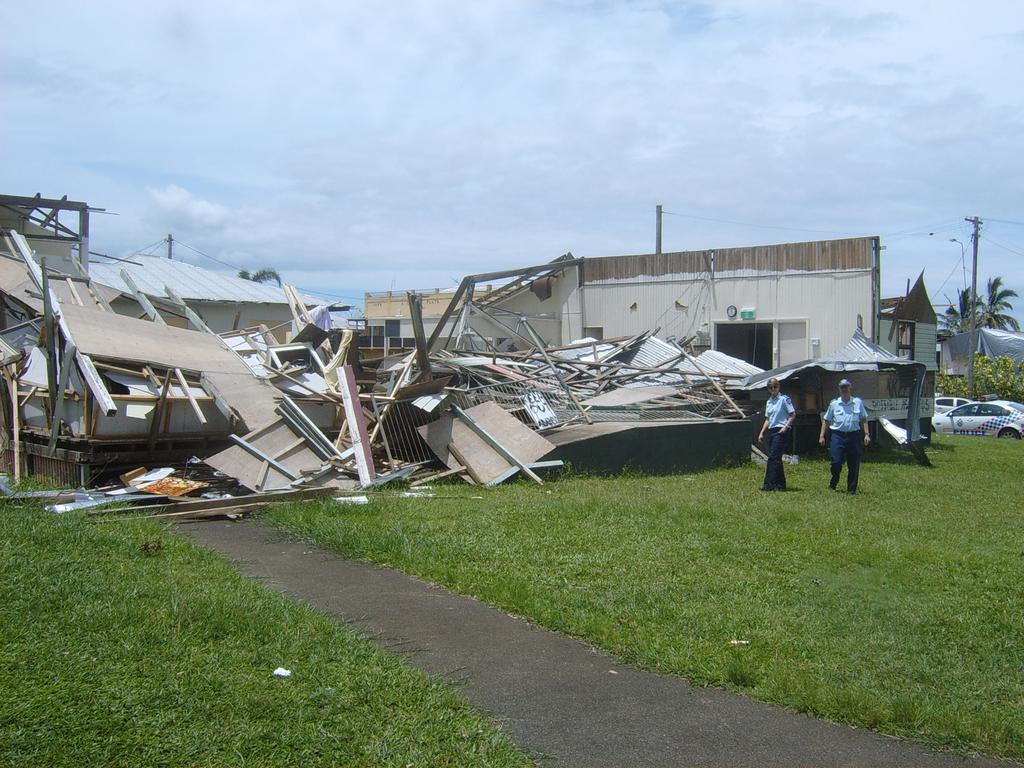
‘WHERE DO WE START?’
Lindsay Hallam still remembers the sight that greeted him the morning after Yasi made landfall.
“None of us had gotten an ounce of sleep,” Mr Hallam said in 2021, 10 years on from Yasi.
“There were trees snapped off 10-15 feet above ground level.
“The storm surge had come over the road; a lot of the foreshore and highway had been washed away and there was mud everywhere.
“You’d look around and think, ‘where do we start?’.”
‘FLYING UP THE STREET’
The wind roaring through south Rockhampton was so deafening, Brian Egan didn’t even realise Cyclone Marcia had flattened a warehouse right next door.
Mr Egan’s house, which was remarkably untouched when the cyclone hit the central Queensland town as a category 3 system, sits right next to the ageing warehouse.
“With all the noise and wind I didn’t know it had happened until after,” Mr Egan told AAP at the time.
“I wasn’t surprised though, because it’s very old and rotten.”
Warren Barnham and his grandmother Audrey Smith watched Cyclone Marcia lift the warehouse up from its foundations from their home across the road.
“The wind got underneath it and it lifted then just dropped,” Mr Barnham said.
Ms Smith added: “We just thought ‘oh God’.
“The next minute the bloody tin came flying up the street.”
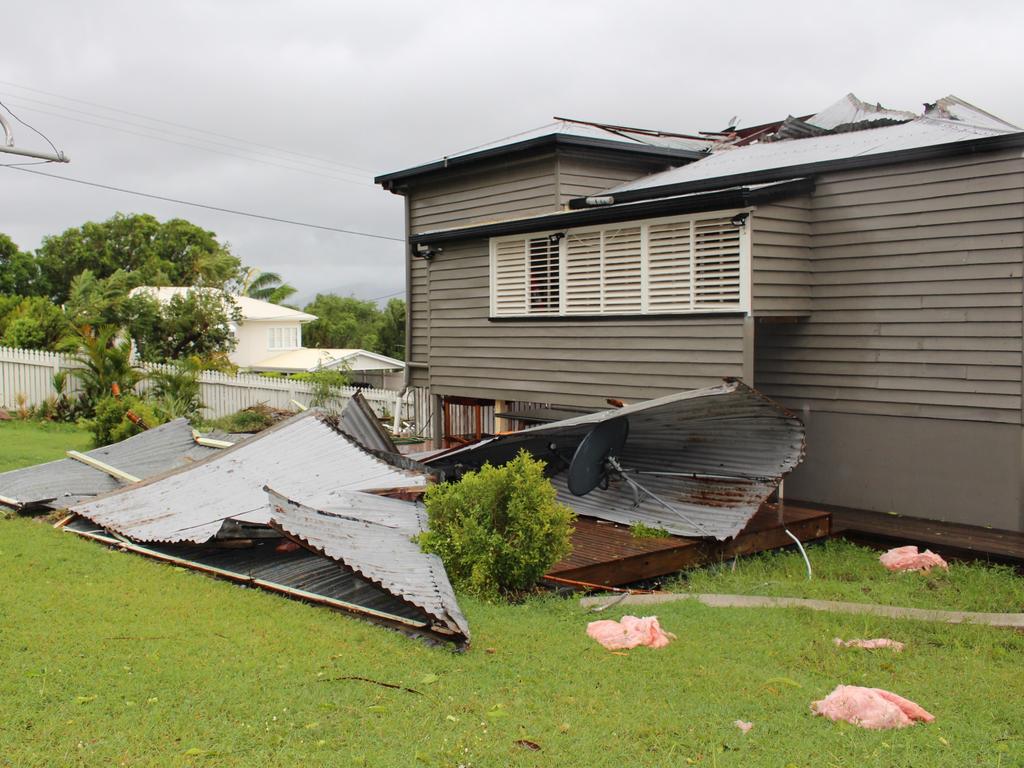
Originally published as Category 5 cyclones: What the wind, rain and noise is really like





